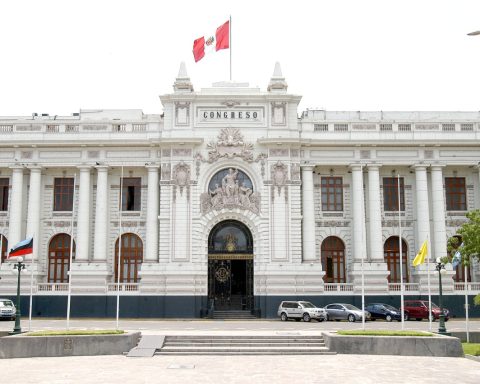The Peruvian health authorities have confirmed the first case of monkeypox in Peru and they have announced an epidemiological fence to prevent the spread of the disease, but what is this virus about?
MORE INFORMATION: Monkeypox outbreak most likely single-source, study says
The patient is a foreigner who resides in Peru and who has had contact with other foreigners. The case was confirmed through a laboratory test in Lima.
Although in principle the patient was admitted to the Santa Rosa hospital in Pueblo Libre, because his condition is stable, he was transferred to his home, where he remains isolated with his family, the Minister of Health indicated on Sunday, June 26, Jorge López, when giving the news.
Today there is the largest global outbreak of the disease, with more than 3,500 cases in fifty countries, outside the continent of Africa. Although smallpox was eradicated in 1980, monkeypox continues to occur in countries in Central and West Africa. Below, more details about what it is and its forms of contagion.
WHAT IS MONKEYPOX?
The monkey pox or of the ape is a rare viral zoonotic disease (virus transmitted from animals to people of the genus Orthopoxvirus in the family Poxviridae), which causes rashes on the body and can be fatal in certain groups.
The clinical presentation of monkeypox resembles that of smallpox, an orthopoxvirus-related infection that was declared eradicated worldwide in 1980. Monkeypox is less contagious than smallpox and causes less severe disease, explains the WHO.
Monkeypox is usually a self-limited disease, although it is difficult to detect, since the incubation period is 6 to 16 days, and can even extend up to 21 days, according to the WHO.
HOW IS MONKEYPOX SPREAD?
Monkeypox is capable of infecting squirrels, rats, mice, rabbits, monkeys, prairie dogs, and humans. It can be spread or transmitted in the following ways:
- Animal-to-human (zoonotic) transmission can occur through direct contact with blood, body fluids, or skin (bite) or mucosal lesions of infected animals.
- Contact with live and dead animals through hunting.
- Consumption of game meat or wild animals are known risk factors.
- Sexual intercourse may represent another source of exposure.
- Through contaminated objects such as clothing or bedding.
- Human-to-human transmission can occur through skin wounds.
- Through saliva or respiratory excretions.
- Through feces.
- Transmission can also occur across the placenta from mother to fetus (which can lead to congenital monkeypox) or during close contact during and after birth.
WHAT ARE THE SYMPTOMS OF MONKEYPOX?
The monkeypox symptoms in humans they are similar to smallpox, but slightly milder. These are:
- Fever. (It is the first symptom)
- Headache.
- Rash – starts on the face and then spreads to other parts of the body. The lesions can be very itchy or sore.
- Muscle pains.
- Back pain.
- Shaking chills.
- Exhaustion.
- Swollen lymph nodes. (lymphadenopathy).
HOW IS MONKEYPOX DETECTED?
Detection of viral DNA by polymerase chain reaction (PCR) is the preferred laboratory test for monkeypox. The best diagnostic samples are directly from the rash: skin, fluid, or crusts, or a biopsy when feasible. Antigen and antibody detection methods may not be useful as they do not distinguish between orthopoxviruses.

















